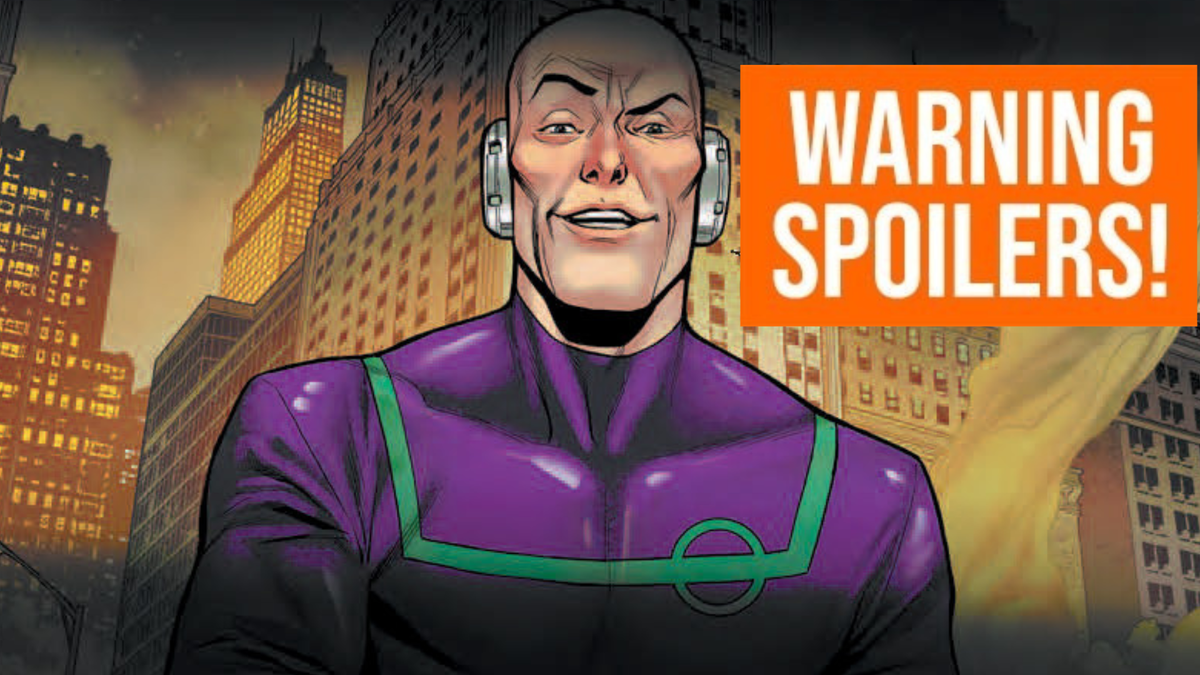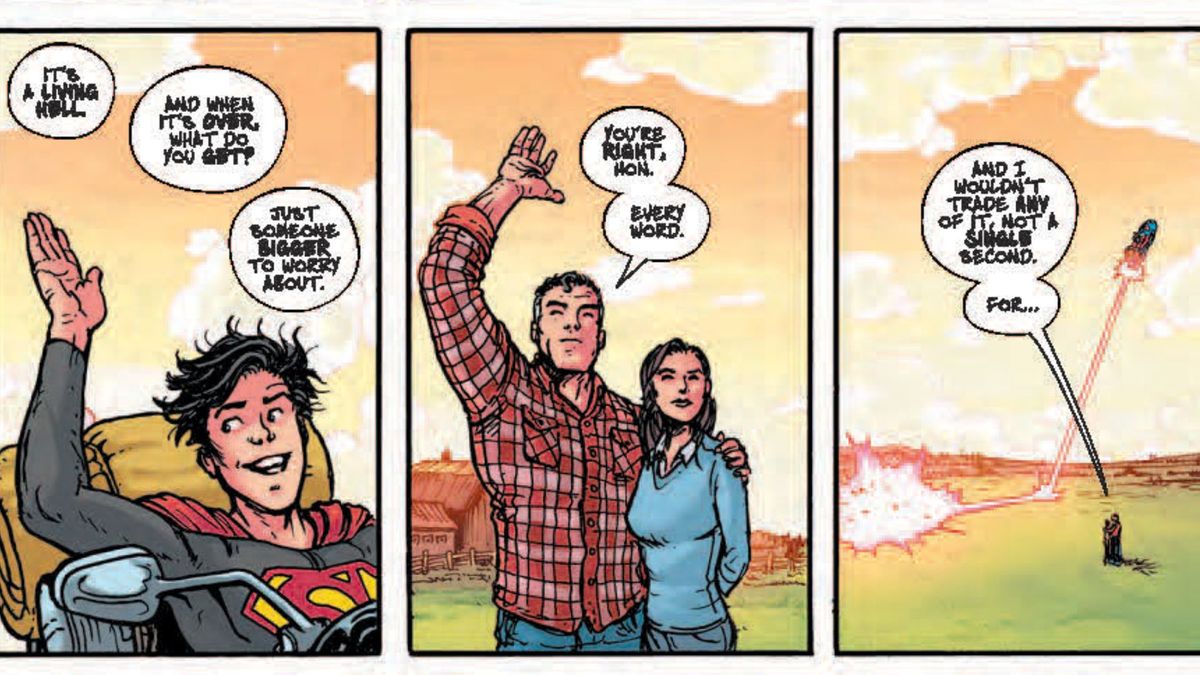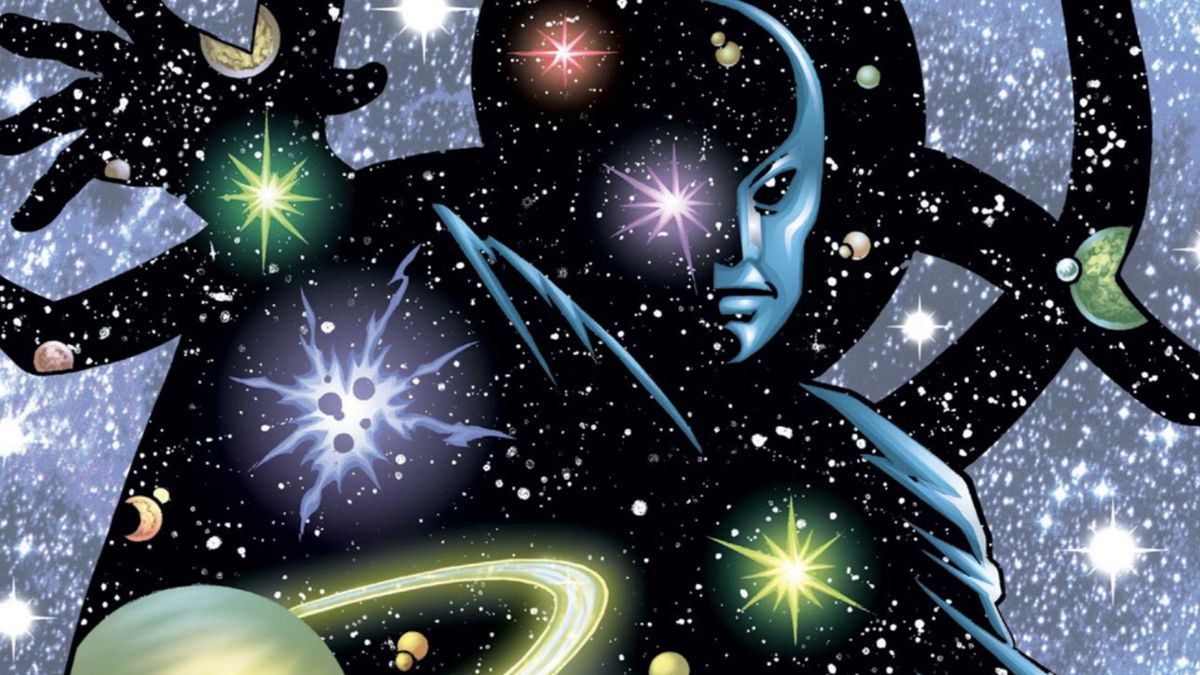Joe Quesada has departed Marvel Comics after a career spanning over three decades – 31 years from his first freelance art assignment to his retirement from the publisher, to be exact – with 11 of those years spent as one of the most well-known and well-regarded Marvel Comics editors-in-chief in the publisher’s 60-plus year history.
In those decades, since the official start of Marvel Comics and the Marvel Universe with 1961’s Fantastic Four #1, only one person served as e-i-c longer than Joe Q, and that is of course Stan Lee himself.
Counting only his time working for Marvel Comics (and not the years he spent prior in Marvel’s earlier incarnations as Timely Comics and Atlas Comics), Lee’s Marvel career as an editor, creator, and executive lasted from 1961 till 1996, just five years longer than Quesada’s time with Marvel. And what’s more, Lee’s tenure as editor-in-chief also lasted just over 11 years – only five months longer than Quesada’s.
Of course, if you count his time with Timely and Atlas, which began in 1939, Stan Lee worked for the company that eventually became Marvel Comics for 57 years, including starting as its editor-in-chief in 1945.
But even in the 60-plus years of strictly Marvel Comics history, there have only been 12 editors-in-chief, with most of them leaving some kind of indelible mark on the publisher and the history of the Marvel Universe.
With Joe Q’s departure from Marvel marking the end of an era and leading many fans to revisit his time as Marvel editor-in-chief, we’re looking back at each person who has held the position, and the impact they’ve had.
Stan Lee (1961-1972)

(opens in new tab)
Everyone knows the name Stan Lee. And as we established, there’s a good reason he has and likely always will be best known as one of the core architects and the original face of Marvel Comics, starting way back with August 1961’s Fantastic Four #1 (opens in new tab) in which Lee and co-creator Jack Kirby launched the Marvel Universe from a single simple idea of four explorers gaining incredible powers from an accident in space.
Lee’s contributions to the early Marvel Universe and its characters and stories are as innumerable as they are hard to pin down, as the line between Lee’s work and that of his collaborators such as Kirby, Steve Ditko, and others, is often blurry.
But Lee’s biggest true contribution not just to the endurance of the Marvel Universe, but to the comic industry overall – and one that rests on the laurels of his title as ‘editor,’ back before Marvel started using the term ‘editor-in-chief’ – is his elevation of comic book creators from being nearly anonymous and often uncredited to being almost heroic names in their own right, recognizable to comic readers and able to build followings just like prose authors, actors, and other entertainers.
Lee stepped down as Marvel Comics editor in August of 1972, just about exactly 11 years after giving rise to the Marvel Universe – though he remained in the title of ‘chairman emeritus’ for decades after, and will likely always be instantly synonymous with the Marvel Universe for time immemorial.
Roy Thomas (1972-1974)

(opens in new tab)
Stan Lee’s successor Roy Thomas was something of a handpicked apprentice for Stan the Man who had written numerous titles, perhaps most notably X-Men and Avengers, in Stan’s wake.
Thomas continued to work as a writer during his time as editor-in-chief, launching a host of new titles and concepts that expanded the Marvel Universe in more cosmic directions.
Oddly enough, Thomas’ arguably biggest behind-the-scenes Marvel Comics success happened shortly after his tenure as editor-in-chief, when he helped secure the Star Wars comic book license for Marvel in the late ’70s.
Len Wein (1974-1975)
Famed writer Len Wein stepped in as editor-in-chief following Roy Thomas’ departure from the role, sticking around for a little over a year before returning to his more well-known writing career.
Quickly after his return to a creative role, Wein and artist Dave Cockrum launched a new era of the X-Men in Giant-Size X-Men #1 (opens in new tab) – which included bringing Wein’s co-creation, the ultra-popular Wolverine, into the team.
Marv Wolfman (1975-1976)
Len Wein was succeeded by his friend and fellow rising star writer Marv Wolfman, who, like Wein, stayed in the position just over a year before passing the reins.
Wolfman’s decision to move on was later proven wise, as it eventually led to his biggest successes in the form of launching DC’s New Teen Titans (opens in new tab) with artist George Pérez, and forging a decades-long reputation as one of the best DC writers of all time.
Gerry Conway (1976)
Taking over as Amazing Spider-Man writer from Stan Lee in 1972 at only age 19, Gerry Conway went on to become one of the wall-crawler’s most notable scribes, penning the landmark story ‘The Night Gwen Stacy Died (opens in new tab)‘ among many others.
Just a few years later, in 1976, Conway was brought into the position of editor-in-chief of Marvel Comics – though his time as e-i-c only lasted a matter of months before Conway returned to his prolific writing career, and editor Archie Goodwin was named as his temporary interim replacement.
Archie Goodwin (1976-1978)
Archie Goodwin is often regarded as one of the best Marvel Comics editors ever, especially among the creators who worked with him. Goodwin’s brief but unique tenure as editor-in-chief began with the understanding that he’d only be in the job temporarily as Marvel searched for a full-time candidate.
But in the short window of just over a year, Goodwin cemented a legacy as the editor-in-chief who (with former e-i-c Roy Thomas’ aforementioned behind-the-scenes help) secured the Star Wars comic book license for Marvel, bringing renewed attention and financial success to the struggling publisher.
Goodwin’s tenure ended with the hiring of Jim Shooter, who went on to become the third longest-running editor-in-chief in Marvel history.
Jim Shooter (1978-1987)

(opens in new tab)
For fans of a certain age or with a certain level of Marvel Comics history, the name Jim Shooter is practically synonymous with the title of editor-in-chief, for good or for ill.
One of the most polarizing leaders Marvel Comics has ever had, Shooter made it his mission to implement a stylistic standard across the publisher’s entire line, while also pushing the boundaries of new ideas. Shooter’s adherence to a particular personal standard coupled with his penchant for out-with-the-old-in-with-the-new stories made him a controversial editor-in-chief for fans and creators alike, with his name sure to elicit some strong reaction from anyone who was there.
Even as Shooter – who got his start in comics writing scripts and even occasionally drawing pencils for DC’s Legion of Super-Heroes at the age of 13 – was providing conceptual templates for his own platonic ideal of superhero comics, he was also spearheading the first big wave of replacement heroes at Marvel.
Shooter oversaw the introduction of a whole generation of characters who replaced some of the original Marvel stars, such as James Rhodes taking over as Iron Man for Tony Stark, John Walker becoming the new Captain America as Steve Rogers laid down his shield, and Eric Masterson becoming the new human host of Thor and wielder of Mjolnir, trends that have become ongoing themes in Marvel Comics and in the Marvel Cinematic Universe.
Perhaps Shooter’s biggest contribution, though, is pioneering the Marvel Comics event story with 1985’s Marvel Super-Heroes Secret Wars (opens in new tab), which Shooter himself wrote after creating the concept in partnership with toymakers Mattel to create what would become the first major Marvel crossover featuring not just all the publisher’s biggest heroes and villains, but a strong multimedia presence with toys and merchandise – something that has become a huge part of Marvel’s business model to this day.
Tom DeFalco (1987-1994)
Tom DeFalco is maybe better known as a long-time Marvel Comics writer than as an editor, thanks to his odd chronological spot in the history of the position.
But along with being the fourth longest-serving person in the role behind Stan Lee, Joe Quesada, and Jim Shooter, DeFalco is also the editor-in-chief who oversaw the launch of ultra-successful titles such as Todd McFarlane’s Spider-Man #1 in 1990 and Jim Lee and Chris Claremont’s X-Men #1 in 1991, two of the publisher’s biggest selling comics ever (and one of the biggest selling comics overall, in the case of X-Men #1).
Some of that success seems to come straight from DeFalco’s philosophy of giving creators more free rein than his predecessor Jim Shooter, as exemplified in the creator-first success of the previously mentioned Spider-Man and X-Men launches.
1995 – the year without an editor
When Tom DeFalco stepped down as editor-in-chief, Marvel Comics made an executive shift that involved having no single, central editor-in-chief with each of five different sections of Marvel getting its own e-i-c equivalent overseer.
Those five editors – Bob Budiansky, Bobbie Chase, Mark Gruenwald, Bob Harras, and Carl Potts – each have long and storied careers at Marvel and beyond. But after just one year, only one would be left in the position of editor-in-chief, with Marvel returning to a more traditional editorial structure.
Bob Harras (1995-2000)
When Marvel Comics returned to a more centralized editorial structure in late 1995, it was X-Men editor Bob Harras who took the reins as sole editor-in-chief on the back of the X-Men franchise’s continued success among fans and in sales.
But Harras’ five-year term as editor-in-chief, though marked with its share of high points, came at a time when Marvel Comics was facing bankruptcy due in part to market forces such as the fall of the speculation boom and in part to strife on the business side of the publisher.
With all that looming, Marvel Comics moved for a change, and a certain upstart editor who had found booming success with a small line of niche titles was brought into the role of editor-in-chief.
Joe Quesada (2000-2011)

(opens in new tab)
And of course, that young editor was none other than Joe Quesada.
After Stan Lee, Joe Quesada – Joe Q to his friends, who, if you ask him, includes everyone who loves comics – is likely the editor most associated as the ‘face’ of Marvel Comics, with a tenure of over three decades with the publisher from his first work as a freelance artist to his May 2022 retirement from his final position in the company as executive vice president and creative director of Marvel Entertainment.
Joe Q’s time as a Marvel editor started with a stint overseeing the Marvel Knights line, relaunching and revitalizing characters including Daredevil, Black Panther, the Inhumans, and more.
This quickly led to his being named editor-in-chief on the back of a plan to bring the same kind of fresh creative energy to the entire Marvel line, and during his time as e-i-c Joe Q’s plan took firm hold with the introduction of the Ultimate line, and the reinvigoration of the Spider-Man, X-Men, and Avengers franchises.
After stepping down as editor-in-chief in 2011 after 11 years in the role (just five months short of Stan Lee’s own tenure counting the Marvel years, as we explained up top), Quesada stuck around as chief creative officer till the transition to his executive VP and creative director title, becoming even more the face of Marvel with continued appearances in front of fans at cons, on camera, and in a variety of media until his recent departure from Marvel.
Axel Alonso (2011-2017)

(opens in new tab)
Like his ’80s era predecessor Jim Shooter, Axel Alonso, who served as editor-in-chief from 2011 to 2017, remains a contentious and often controversial editor in Marvel history, both for his successes and failures.
As in Shooter’s era, Alonso’s tenure was categorized by big swings at new ideas and new heroes, with Alonso overseeing everything from Jane Foster becoming Thor, to Sam Wilson becoming Captain America, to the introduction of Kamala Khan as the new Ms. Marvel, the crowning of a new Ghost Rider in Robbie Reyes, and even Doctor Octopus taking over Peter Parker’s body to become the Superior Spider-Man – and that’s just the tip of the iceberg.
Though some of these changes raised controversy among fans who disliked the replacement of classic Marvel heroes, many of the characters and concepts Alonso brought to the fore remain key parts of Marvel Comics lore, with some, like Kamala Khan and Sam Wilson as Captain America, taking on an even larger life thanks to the Marvel Cinematic Universe.
And of course, Alonso was editor-in-chief for 2015’s Secret Wars (opens in new tab), which marked the 30th anniversary of the original crossover and which included story elements now seemingly making their way to the MCU as well.
C.B. Cebulski (2017-present)
Marvel’s current editor-in-chief, C.B. Cebulski, has been in the position going on five years. And after the more public presence of Joe Quesada and Axel Alonso, Cebulski has stepped back from the spotlight somewhat, in some ways rolling back the position of editor-in-chief as the main ‘face’ of Marvel that some of his predecessors have occupied.
Despite being less of a direct spokesman for Marvel as a brand than some other e-i-c’s have been, Cebulski’s presence in the role has remained controversial, in part due to his use of the Japanese pseudonym ‘Akira Yoshida’ early in his career.
In terms of his time as Marvel’s editor-in-chief, Cebulski kicked off his tenure with an initiative called ‘Marvel Legacy’ which aimed to bring back some of the core Marvel heroes such as Steve Rogers, Tony Stark, and others, to work alongside their newer counterparts with a clear message of marrying old school, classic Marvel ideals with newer, co-existing concepts – an ethos that still seems to be the guiding force behind the current era of Marvel Comics.
The editors above are some of the people behind the best Marvel Comics stories of all time.
 Game News Video Games Reviews & News
Game News Video Games Reviews & News



